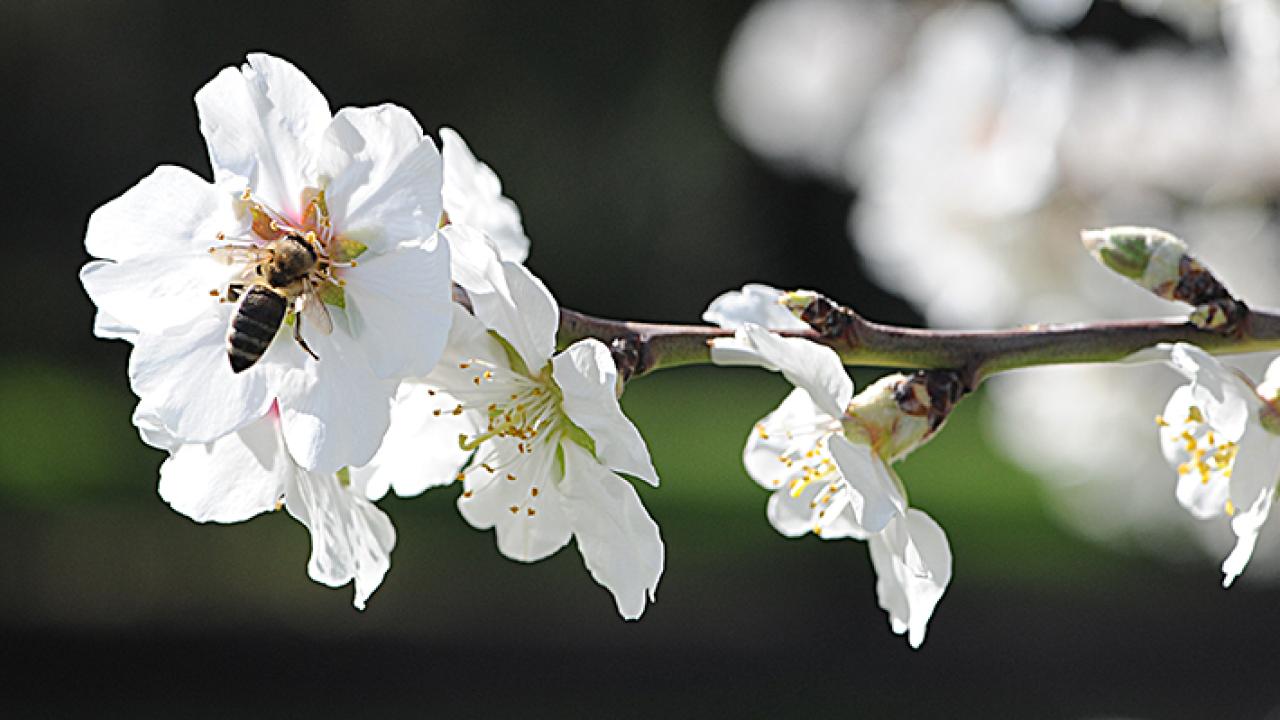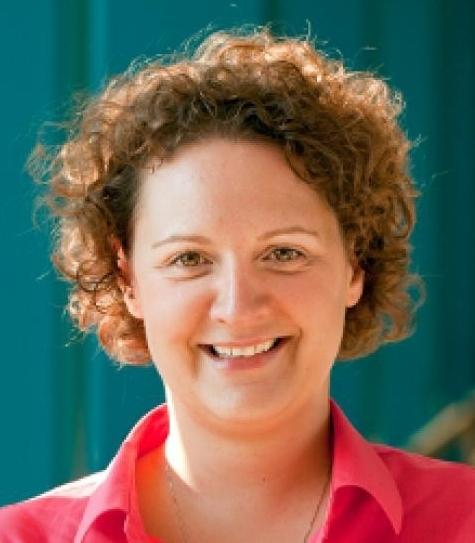
Researchers Analyze a Self-Fertile Almond Variety
'Comparison of Yield Characteristics of Independence, a Self-Compatible Almond Variety, as Affected by the Presence of Honey Bee Pollinators'

A six-member team, including Elina Lastro Niño, associate professor of UC Cooperative Extension, UC Davis Department of Entomology and Nematology, is sharing an online pre-print version of their research on the yield characteristics of a self-compatible almond variety.
The paper, titled “Comparison of Yield Characteristics of Independence, a Self-Compatible Almond Variety, as Affected by the Presence of Honey Bee Pollinators,” is online at https://www.researchsquare.com/article/rs-3870916/v1 during the review process for publication in Scientific Reports.
Co-authors with Niño are Angelita De la Luz of Beeflow Inc. Smart Pollination Services; Bernardo Niño of the Xerces Society for Invertebrate Conservation (he is formerly of UC Davis); William Stacy, UC Davis Extension; and Arathi Seshadri, U.S. Department of Agriculture’s Agricultural Research Service (USDA-ARS), based at UC Davis.
The abstract:
“Until recently, all the almond varieties grown globally, have been self-incompatible, a fact that drives the interdependent relationship between almond growers and the beekeepers that provide honey bee colonies for pollination. Recently, almond growers have begun a transition to self-fertile varieties, such as Independence, which do not require genetically distinct pollen to produce kernels. However, this transition often occurs under the impression that due to self-compatibility, one can eliminate the honey bee rentals for pollination and thereby reduce costs for these orchards, but the impact that eliminating rented colonies would have on almond quality and yield are not fully understood.”
“Here, we explore the extent to which yields for Independence variety vary with and without honey bee pollination and across a range of hive stocking densities in the San Joaquin Valley of California. We found that access to honey bee pollination significantly improves nut set and whole tree yields, ultimately resulting in economically meaningful gains to growers. Our economic model shows how specific honey bee hive stocking density recommendations depend on the surrounding landscape and will change as acreage of self-fertile varieties continues to increase over time."
In the research, the authors point out that
- The United States is the world’s largest almond producer, with California accounting for nearly 80 percent of the world’s almond supply
- Almond orchards rank as the highest in their need for pollinators, specifically honey bees
- California’s almond orchards need more than a million honey bee colonies every season for pollination, brought in all over the country and globally
- There are insufficient colony numbers stemming from poor nutrition, improper use of agrochemicals, loss of natural habitat and increased incidences of pests and diseases,
- Until recently, all the almond varieties grown in California have been self-incompatible and almond growers depend exclusively on beekeepers to provide honey bee colonies for pollination
"Independence varieties are expected to be less dependent on insect pollination for nut production," the authors wrote. "Thus, growers expect to theoretically be able to eliminate honey bee colony rentals, until now essential for pollination services in commercial almond orchards growing the nonpareil varieties. The nut yields of the different varieties were comparable in 2022, with the Independence variety showing a slightly higher nut set per tree In this study, we examined the efficacy of the self-fertile variety, Independence, to successfully produce fruits and nuts in the absence of insect pollinators. Extending this, we further determined whether hive density (number of hives per acre of almond trees) has an impact on fruit and nut production in the Independence orchards."
See more at https://www.researchsquare.com/article/rs-3870916/v1.
(Note: Research Square lets researchers share their work early, gain feedback from the community, and start making changes to their manuscript prior to peer review in a journal. Contact Elina Lastro Niño at elnino@ucdavis.edu)
